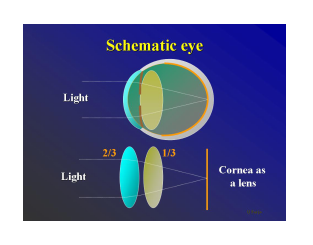LASER VISION CORRECTION PROCEDURES
About Laser Vision Correction Procedures
Normally light entering the eye is focused on to the retina by the cornea and the lens producing a sharp and clear image. Disparity between focusing power and length of the eyeball results in defocus and is called a refractive error. In myopia the eyeball is too long and in hyperopia the eyeball is too short.


PRK/ LASIK/ LASEK are all forms of Laser vision correction which allow clear vision without spectacles/lenses in most cases and spectacle independence in all individuals who are suitable candidates for it. This allows a person broader career opportunities and hindrance free outdoor activities like swimming, trekking, football/ tennis. After laser, even small things like driving in the rain/stepping out of an AC room without the annoyance of your spectacles fogging give great satisfaction.

This is a short procedure in which the shape of the front of the eye (cornea) is altered to change its focusing power and hence eliminate/minimize the need for glasses While these procedures have excellent results, a detailed evaluation needs to be done before the procedure is planned to ensure optimum results.
Pre procedure evaluation:All individuals wearing contact lenses must stop wearing them for a week before evaluation to avoid wrong readings due to lens warpage. Tests include:
After evaluation a detailed counseling is done to ensure realistic expectations thus maximizing outcomes. The laser procedure with the current newer generation machines is very predictable and accurate. The tracking systems prevent eccentric (off axis) treatment. With all the data obtained in the evaluation it is possible to customize the procedure to the individual eye affording better quality vision after the procedure. While the actual laser procedure is the same there are some basic differences between LASIK and PRK. In LASIK the treatment is done under a flap while in PRK it is done on the surface of the cornea PRK gives equally good results for lower powers as LASIK. However LASIK is virtually pain free and allows quicker recovery with a much lower risk of haze and regression.

his procedure is an option for people who have high spectacle power and thin corneas and are not eligible for laser correction. While not suitable for everyone this procedure widens the scope of correction for spectacle elimination


